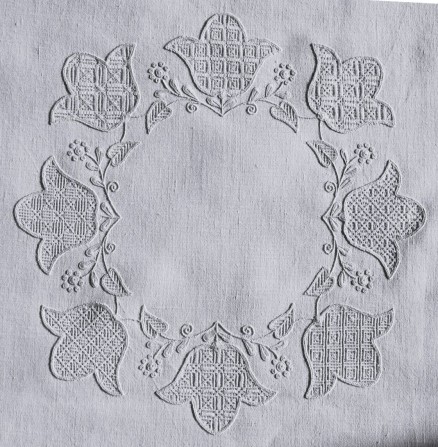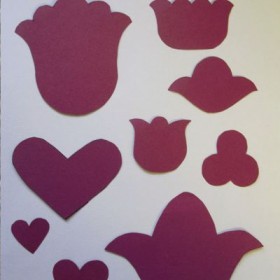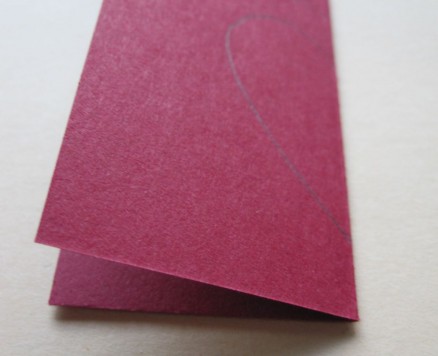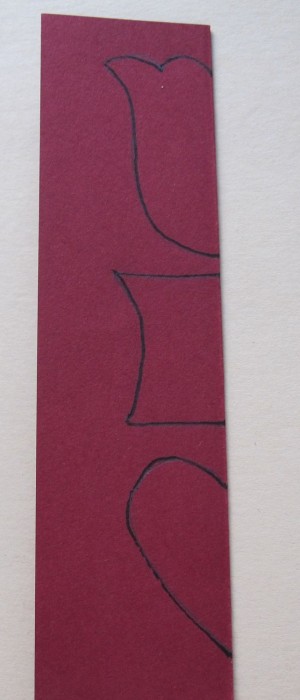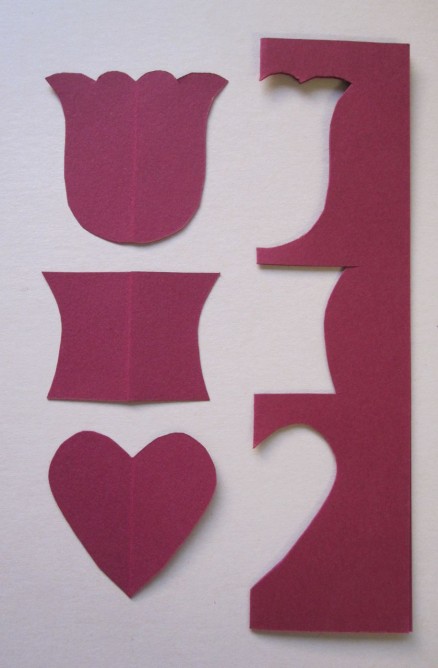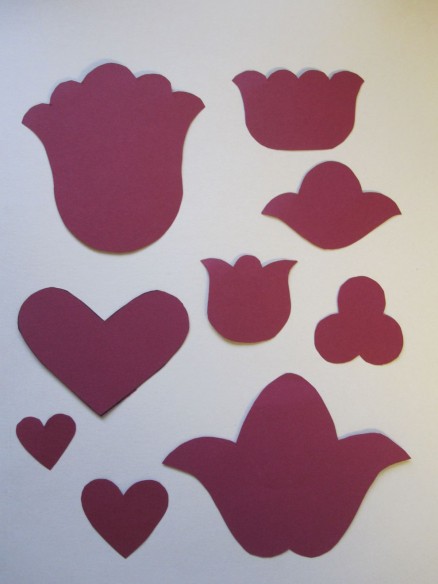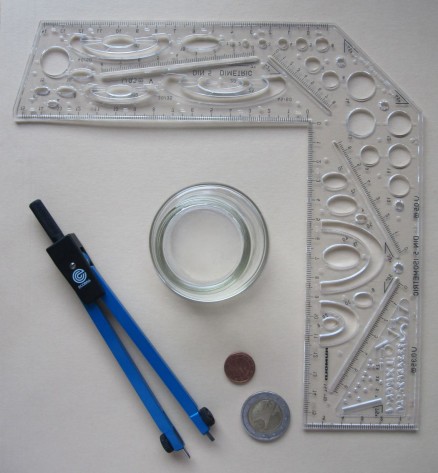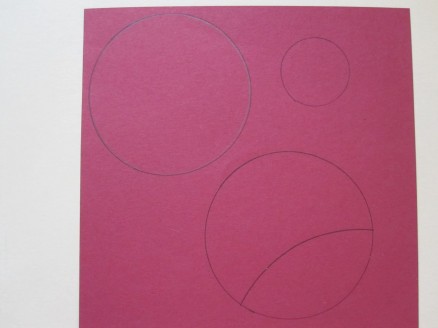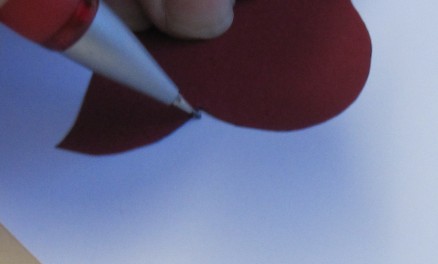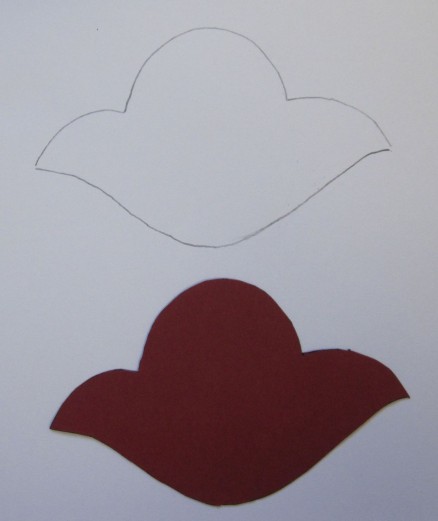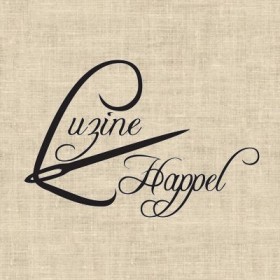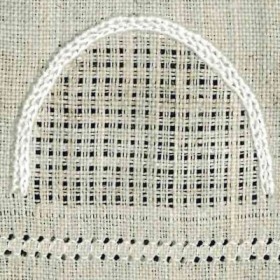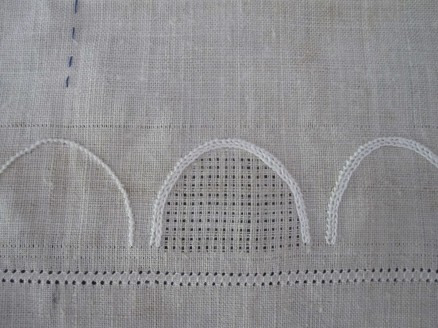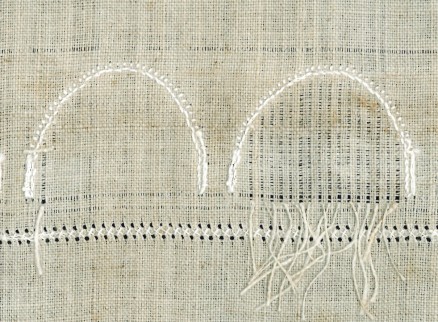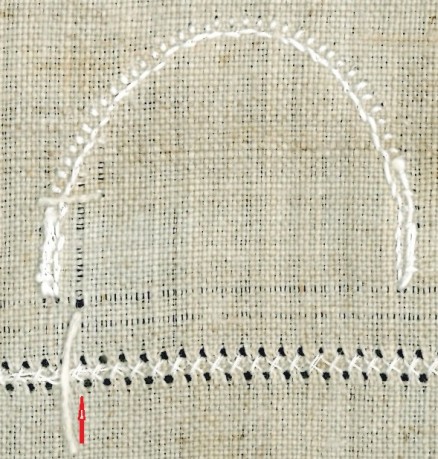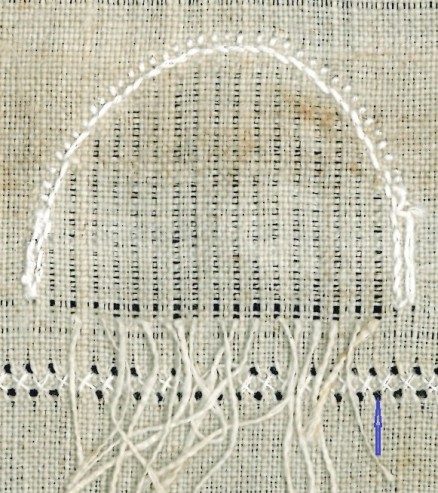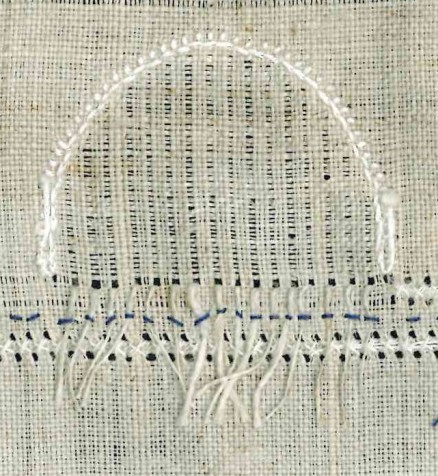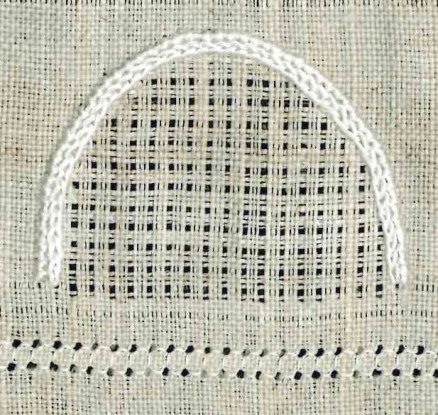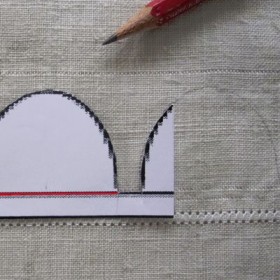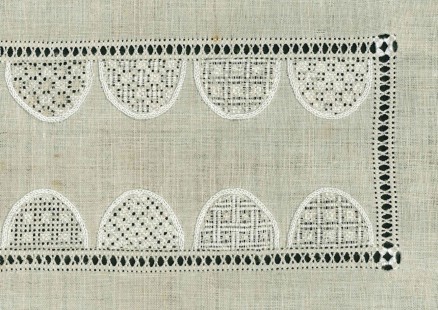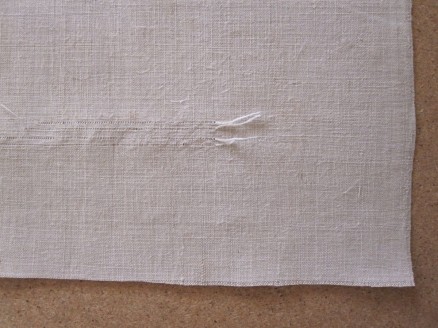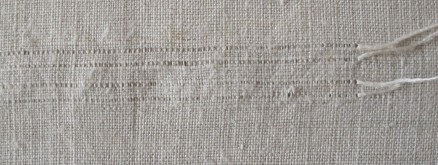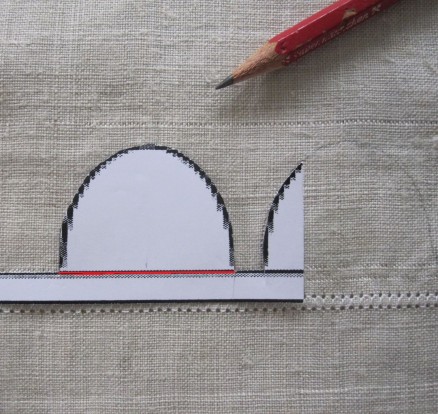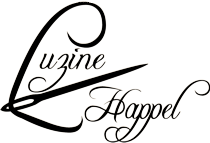A spring-fresh tulip wreath!
When I got the idea for this tulip wreath, I had a romantic and nostalgic picture before my eyes. It showed young ladies in a spring meadow dancing hand-in-hand in a circle. So, I chose the tulip shape whose tips, sprawled out wide, remind me of the dancing young ladies in the meadow.
Because I needed a double line, I measured in from the outline 0.5 cm and marked it with dots placed close together. I then connected the dots to make a line. In the end my shape measured 13.2 cm wide and 10 cm in the high.
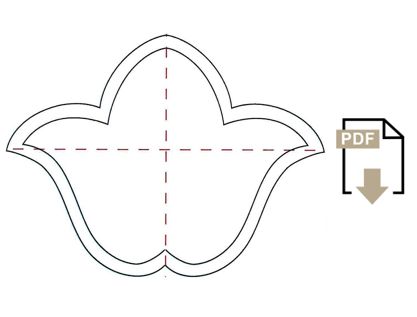
I marked the vertical and the horizontal axis on the linen to be able to transfer the outline precisely.
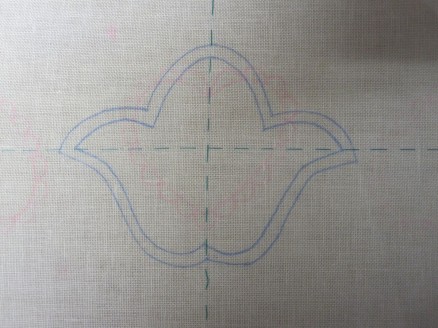
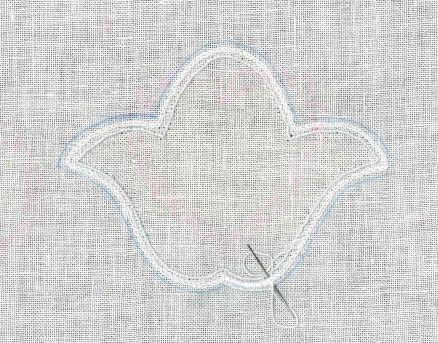 On Weddigen linen, 13.5/cm thread count, Coral Knot stitches were worked along the inner line using Coton à broder No. 16. Using Coton à broder No. 20 Chain stitches were worked a small distance outside the Coral Knot stitches. The outside Chain stitches were covered with densely worked Blanket stitches between the outline and the Coral Knot line, also using Coton à broder No. 20. Using Coton à broder No. 30 Chain stitches were worked directly inside the Coral Knot stitches.
On Weddigen linen, 13.5/cm thread count, Coral Knot stitches were worked along the inner line using Coton à broder No. 16. Using Coton à broder No. 20 Chain stitches were worked a small distance outside the Coral Knot stitches. The outside Chain stitches were covered with densely worked Blanket stitches between the outline and the Coral Knot line, also using Coton à broder No. 20. Using Coton à broder No. 30 Chain stitches were worked directly inside the Coral Knot stitches.
The shape was filled with pattern “448”. This pattern I will present in a later article.
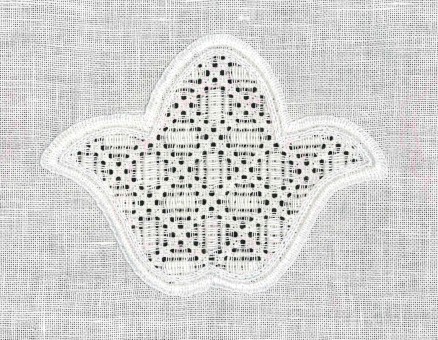 After finishing, the embroidered piece was washed (boiled), starched and ironed. Then, the tulip was cut. If needed, such closely trimmed embroidery can be washed and ironed – quick and easy – at any time, but never spun in a washing machine!
After finishing, the embroidered piece was washed (boiled), starched and ironed. Then, the tulip was cut. If needed, such closely trimmed embroidery can be washed and ironed – quick and easy – at any time, but never spun in a washing machine!
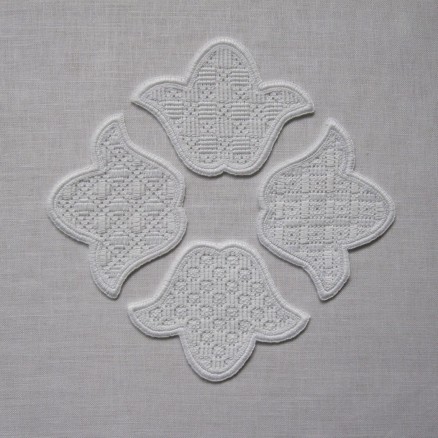 Already with four such tulips one can establish a nice decoration.
Already with four such tulips one can establish a nice decoration.
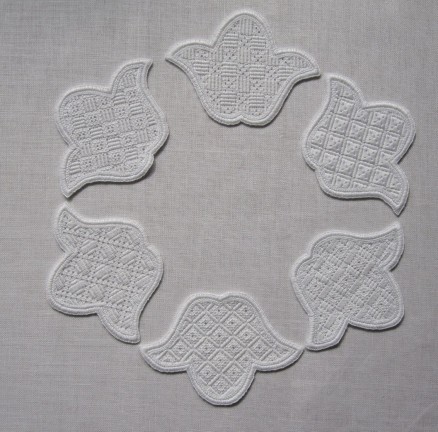 Using six tulips one can get a small wreath.
Using six tulips one can get a small wreath.
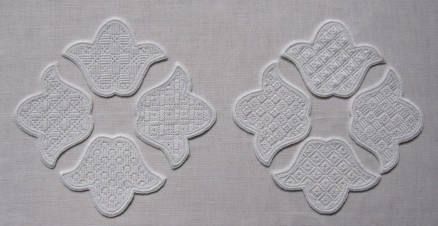 I embroidered eight pieces. These can be arranged into two groups of 4
I embroidered eight pieces. These can be arranged into two groups of 4
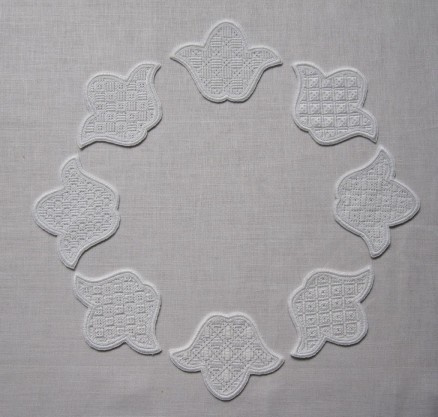 or made into a wreath of eight tulips. It looks beautiful, doesn´t it?
or made into a wreath of eight tulips. It looks beautiful, doesn´t it?
By the way, all those small projects are only the precursors of Schwalm whitework. If one wishes to have such a wreath as a Schwalm design, one must add at least one other shape with a filling pattern and also, tendrils, small leaves and perhaps some small flowers. The result could look so: